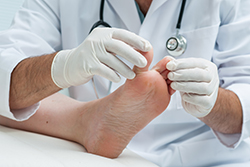Do you have a youngster who plays sports and complains of heel pain following exercise but feels better after resting? Are your child(ren) participating in a sport that requires running and leaping, particularly one that is played on a hard surface like track, basketball, soccer, or gymnastics? If this is the case, your kid or daughter is probably afflicted with Sever’s disease.
Growing children frequently have heel discomfort, especially those who engage in physical activity and have Sever’s disease. It typically happens during the adolescent growth spurt, which lasts for about two years during the beginning of puberty and is when children grow the fastest. For girls, this growth spurt can start at any age between 8 and 13, and for boys, between 10 and 15. Sometimes, during the early puberty development spurt, the heel bone grows more quickly than the leg muscles and tendons. This can make the muscles and tendons extremely tight and stretched out, which will reduce the flexibility of the heel and put pressure on the growth plate.
The Achilles tendon, which connects to the heel’s growth plate, is the strongest tendon in the body. The growth plate is harmed over time by repeated strain on the tight Achilles tendon, which results in the swelling, tightness, and discomfort that are typical of Sever’s disease. Because the rear of the heel typically stops growing at the age of 15, when the growth plate solidifies and the developing bones fuse together to become mature bone, this problem seldom occurs in older teenagers.
Heel lifts, avoiding physical activity, rest, and an orthotic to act as a shock absorber are frequently used as Sever’s Disease treatment options.
Contact your Atlanta podiatrist at American Foot and Leg Specialists if your child exhibits these symptoms.





